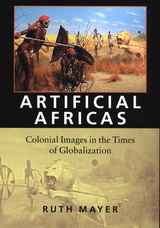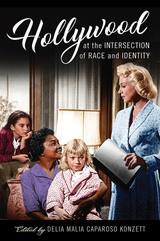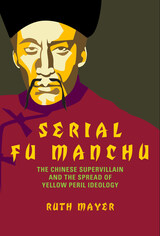3 books about Mayer, Ruth

Artificial Africas
Colonial Images in the Times of Globalization
Ruth Mayer
Dartmouth College Press, 2002
“Africa is an artificial entity,” notes Ruth Mayer, “invented and conceived by colonialism.” In this wide-ranging study, Mayer explores the ways in which Western, and especially American, popular culture has manufactured and deployed various images of “Africa,” and how those changing constructions have reflected Western social and political concerns from the era of colonialism to the age of globalization. Mayer mines an enormous array of sources to expose the diverse images and narrative strategies that have been prominent in Western representations of Africa. She ranges authoritatively from King Solomon’s Mines and Tarzan to Khartoum and Greystoke, from Conrad’s Heart of Darkness to Nicholas Roeg’s film version, from Isak Dinesen and Ernest Hemingway to Ishmael Reed and Charles Johnson, from comic books to hip hop acts. In the process, she shows how seemingly stable cultural stereotypes have actually been transformed to reflect changing attitudes, conditions, and fears in the West, “adjusting the symbolic repertory of yesterday to the conceptual and ideological frameworks of today.” Dividing her work into “African Adventures” and “Alternative Africas,” Mayer not only restores an international context to American cultural history, but also shows the ways in which these images have functioned within both white and African American communities. With a deft command of both cultural source materials and current debates, Mayer explores the complex and powerful roles these “artificial Africas” have played in Western culture.
[more]

Hollywood at the Intersection of Race and Identity
Delia Malia Caparoso Konzett
Rutgers University Press, 2020
Hollywood at the Intersection of Race and Identity explores the ways Hollywood represents race, gender, class, and nationality at the intersection of aesthetics and ideology and its productive tensions. This collection of essays asks to what degree can a close critical analysis of films, that is, reading them against their own ideological grain, reveal contradictions and tensions in Hollywood’s task of erecting normative cultural standards? How do some films perhaps knowingly undermine their inherent ideology by opening a field of conflicting and competing intersecting identities? The challenge set out in this volume is to revisit well-known films in search for a narrative not exclusively constituted by the Hollywood formula and to answer the questions: What lies beyond the frame? What elements contradict a film’s sustained illusion of a normative world? Where do films betray their own ideology and most importantly what intersectional spaces of identity do they reveal or conceal?
[more]

Serial Fu Manchu
The Chinese Supervillain and the Spread of Yellow Peril Ideology
Ruth Mayer
Temple University Press, 2013
The evil mastermind—and master of disguise—Fu Manchu has long threatened to take over the world. In the past century, his dastardly plans have driven serialized novels, comic books, films, and TV. Yet this sinister Oriental character represents more than an invincible criminal in pop culture; Fu Manchu became the embodiment of the Yellow Peril.
Serial Fu Manchu provides a savvy cultural, historical, and media-based analysis that shows how Fu Manchu’s irrepressibility gives shape to—and reinforces—the persistent Yellow Peril myth. Ruth Mayer argues that seriality is not merely a commercial strategy but essential to the spread of European and American fears of Asian expansion.
Tracing Fu Manchu through transnational serials in varied media from 1913 to the 1970s, Mayer shows how the icon evolved. She pays particular attention to the figure’s literary foundations, the impact of media changes on his dissemination, and his legacy.
In the series Asian American History and Culture, edited by Sucheng Chan, David Palumbo-Liu, Michael Omi, K. Scott Wong, and Linda Trinh Võ
In the series Asian American History and Culture, edited by Sucheng Chan, David Palumbo-Liu, Michael Omi, K. Scott Wong, and Linda Trinh Võ
[more]
READERS
Browse our collection.
PUBLISHERS
See BiblioVault's publisher services.
STUDENT SERVICES
Files for college accessibility offices.
UChicago Accessibility Resources
home | accessibility | search | about | contact us
BiblioVault ® 2001 - 2024
The University of Chicago Press









